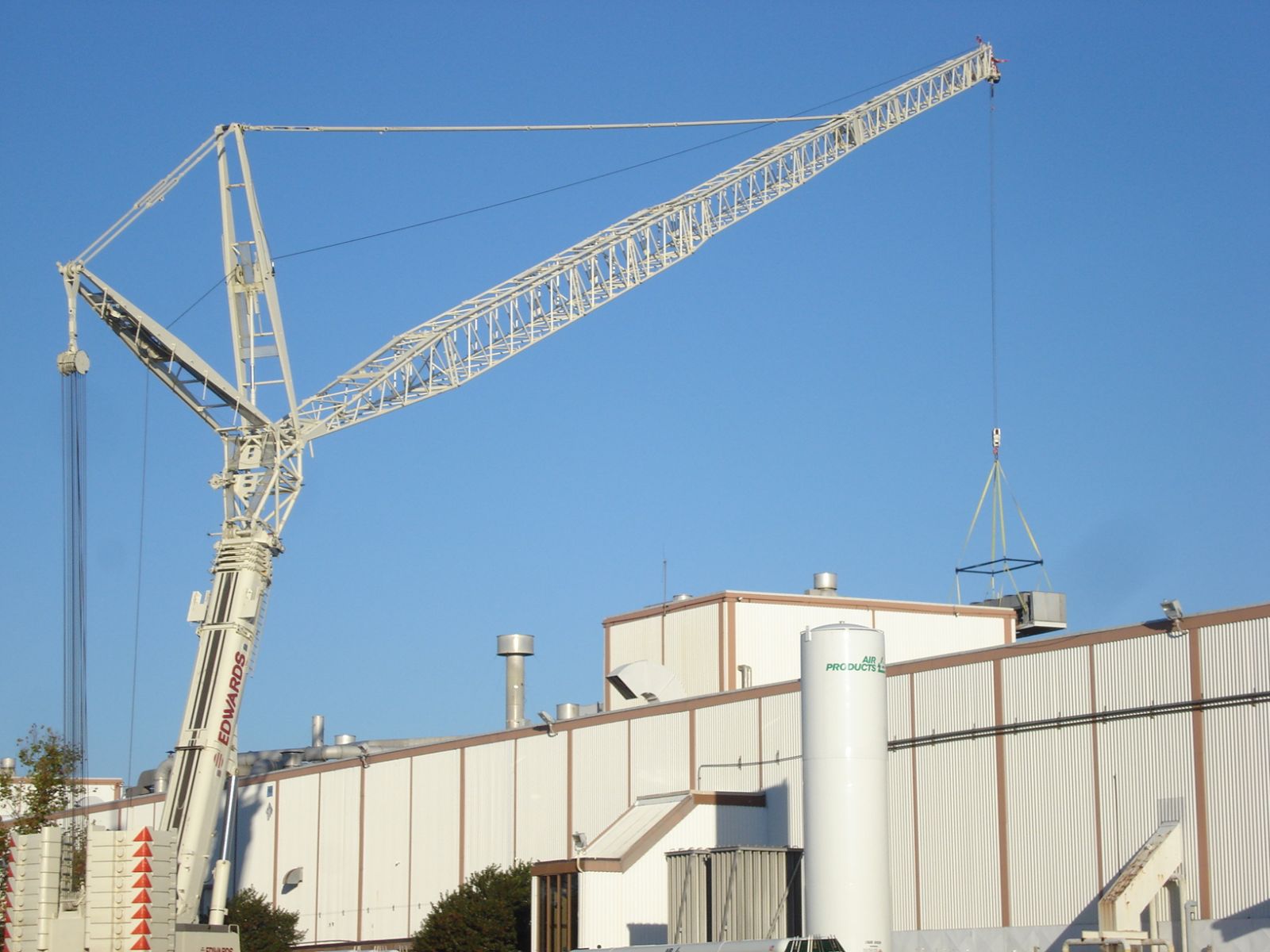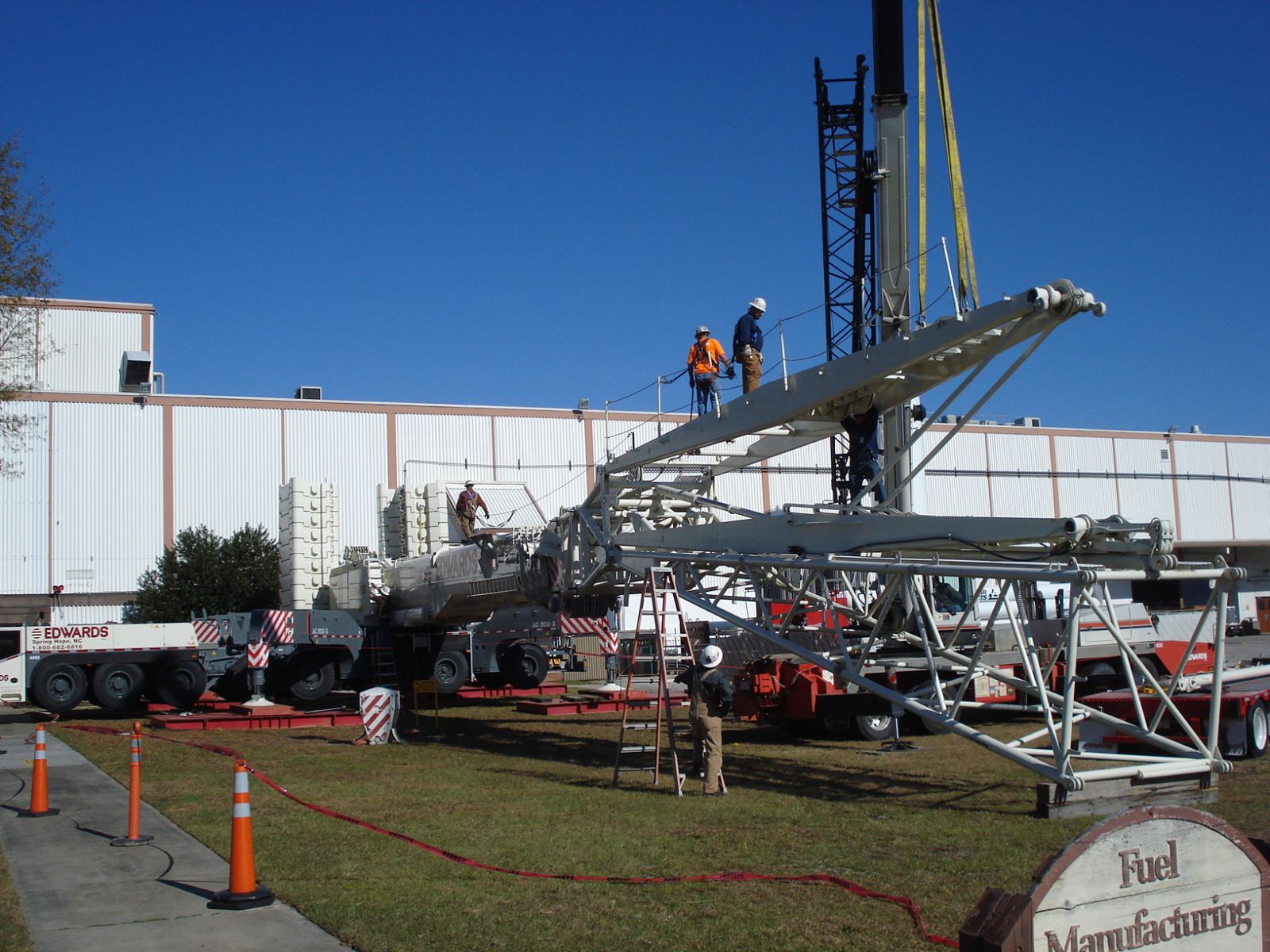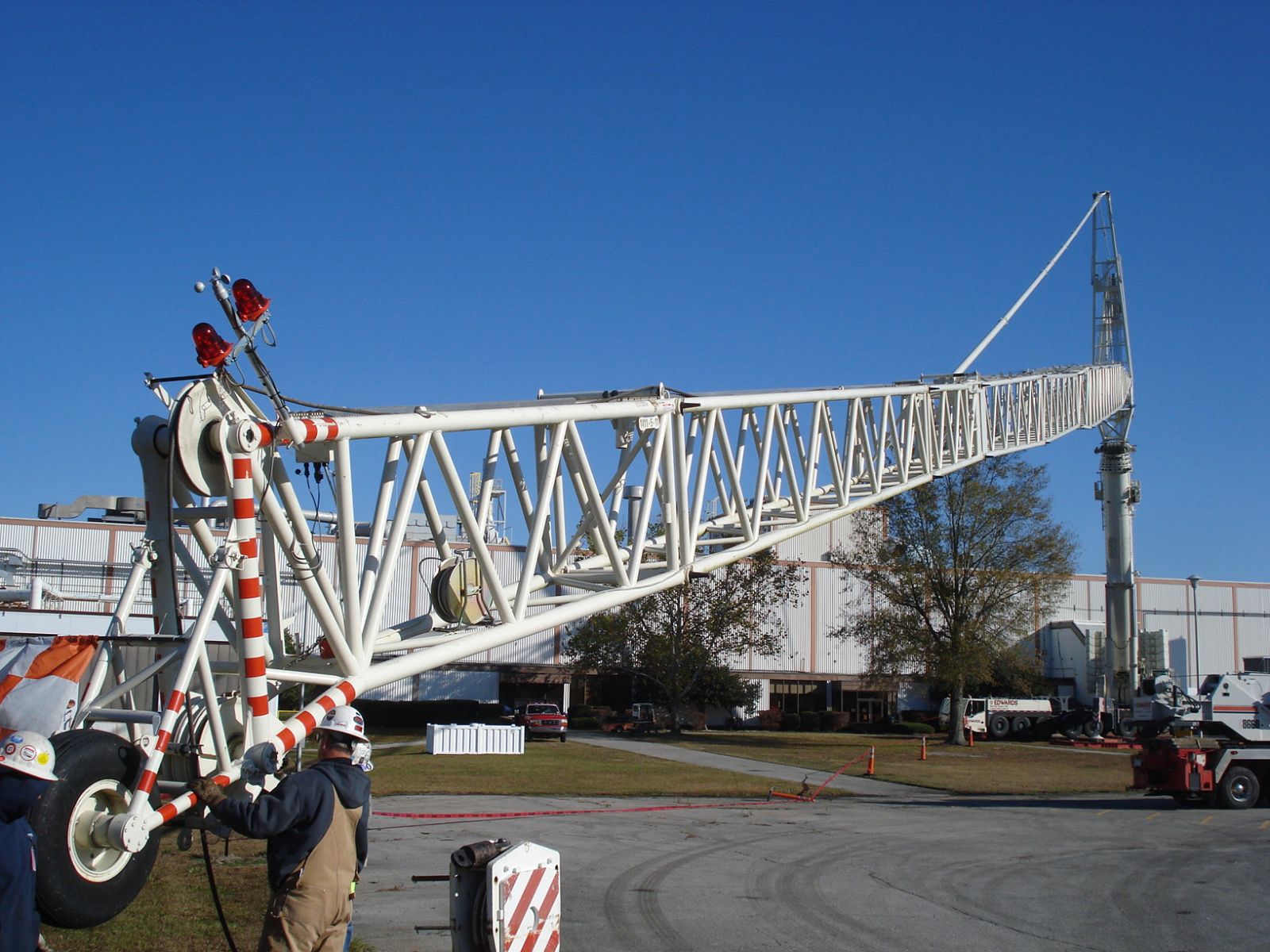Terex AT Crane Part of a Complex Lift at a Nuclear Energy Plant
 |
May 2, 2012—In the nuclear power sector, redundancy in safety procedures must be standard protocol. Wilmington, N.C.-based contractor Edwards Inc. recently experienced just how much safety margins must increase when performing even seemingly routine lifts at the GE Hitachi Nuclear Energy Plant in Castle Hayne, N.C.
Serving the power generation sector among many others, the industrial contractor’s rigging and crane service expertise and responsiveness of its Terex AC500-2 all-terrain crane were put to the test when changing out air conditioning chillers on top of the factory’s roof.
“The plant makes aircraft engines in one area of the plant and nuclear fuel in another,” said Jamie Ezzell, division manager for Edwards, Inc. “The chillers were on the nuclear fuel manufacturing side of the plant.”
Due to the delicate nature of the fuel manufacturing process, the plant could not be shut down, nor could the critical production processes be interrupted. “Planning and safety margins needed to be increased exponentially on this job,” Ezzell added. “During the lift, the factory had workers positioned at certain valves used to quickly shut down the plant in case there was an issue with the lift.”
Significant Savings
 |
It was a complex lift, and representatives at the GE Hitachi plant considered enlisting a helicopter for the removal and replacement of the two 17,000-pound chiller units from the factory’s roof. However, the long distance which the helicopter would have to travel, plus the required two trips to replace both chillers made this an extremely expensive prospect.
Ezzell and Edwards had an alternative approach that would prove to save GE Hitachi significantly on their chiller replacement costs. “We were confident our Terex AC500-2 crane could handle the job, so we set up a site visit to discuss the project,” Ezzell said.
To remove and replace both chillers, Edwards would have to mobilize its AC500-2 all-terrain crane twice. After replacement of the first chiller, the customer required a testing period prior to replacement of the second unit. “They wanted to make sure the new chiller was operating properly for at least one month before replacing the second,” says Ezzell.
Of major concern for GE Hitachi was the ground’s ability to support the crane’s weight over its four star-type outriggers. “Before the job, the customer required ground core samples and ground-penetrating radar procedures to ensure the ground could support the lift,” said Ben Cockerham, vice president of operations for McClung-Logan Crane and Equipment LLC, an Terex distributor for North Carolina.
Ezzell added that the engineers determined the ground could safely support up to 300,000 pounds. Relying on the AC500-2’s CraniMax software, the program that stores the crane’s lift charts for all its different configuration, Edwards was able to estimate the the crane’s ground pressure prior to performing the lift. “The ability to estimate and see the actual ground-bearing pressures is a huge benefit for us,” said Ezzell. “It’s a big selling feature for jobs.”
Quick and Smooth
 |
With the contract secured, removal and replacement of the first chiller was set for early December 2011. Edwards’ crew moved in on November 29 with McClung-Logan representatives onsite to offer support. The contractor freighted in the loads, including maximum counterweight and 275 feet of luffing fly jib. “The AC500-2 gets to the jobsite fast and sets up quick,” said Ezzell. “The closest competitive crane takes much longer to mobilize and set up.”
At a mere 63’3” long, the Terex AC500-2 AT crane provides the shortest vehicle length in the 600-ton (500-tonne) class for fast mobilization. Yet, this all-terrain crane delivers the highest lifting capacities on eight axles, and its 183.7-foot main telescopic boom offers the longest system length in its class that can travel at a 13.2-ton axle load.
Within 14 hours (not counting safety orientations and inspections) workers assembled the crane and were ready for the lift. A 60-ton crane assisted with assembly and installation of the 275-foot luffing jib.
The 17,000-pound chillers were located nearly 250 feet from the 40-foot tall building’s edge. This required the AC500-2 to work at a 282-foot radius to perform the lift. Prior to making the initial pick, crews simulated the lift on the opposite side of the crane’s outrigger. The test included a 17,000-pound weight and was designed to test ground pressures and the crane’s performance prior to the actual lift.
“All ground pressures were within acceptable limits, and the crane performed as expected during the test,” Cockerham said. The software ground pressure estimates for the outriggers were within 1,000 pounds of actual pressure, Ezzell said.
After passing the test lift, the crane and crew members began the sensitive removal and replacement procedure. “Plant workers drew alleyways on the rooftop to designate where the chillers could pass over,” Ezzell said. These alleys included 90° turns that zigzagged across the roof, so the chiller would not be lifted over the factory’s designated critical areas.
Testing the skills of the crane operator and nimbleness of the AC500-2’s controls, the entire lift was performed blind. The crane operator was in constant radio communication with crew members on the roof to navigate the chiller through the maze, and the unit was never lifted more than 20 feet above the rooftop. “The crane’s controls are very responsive to operator movements, which aids in delicate lifting jobs like this,” Cockerham said.
With the project starting first thing in the morning, Ezzell reports that his crews removed the old chiller and had the new unit up within 30 minutes, and the job was complete by 1:30 p.m. It took a mere 8 hours to break down the AC500-2 and mobilize the unit off the nuclear facility’s grounds.
After the prescribed test period for the new chiller, Edwards’ crews and AC500-2 crane were back onsite in February to remove and replace the second unit. The crane and rigging company equaled the success of the first lift, enabling GE Hitachi to have the project completed much more cost-effectively with the AC500-2 than with the helicopter.


